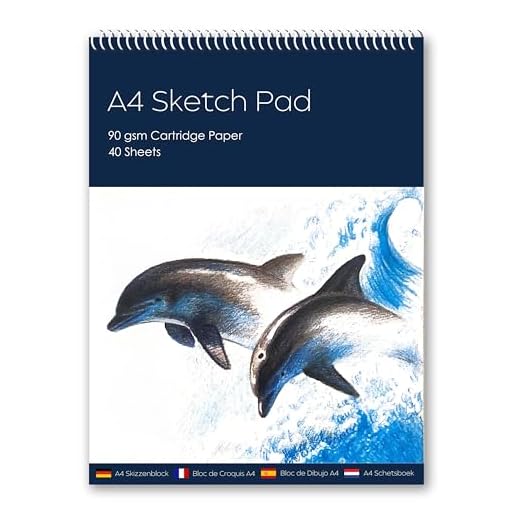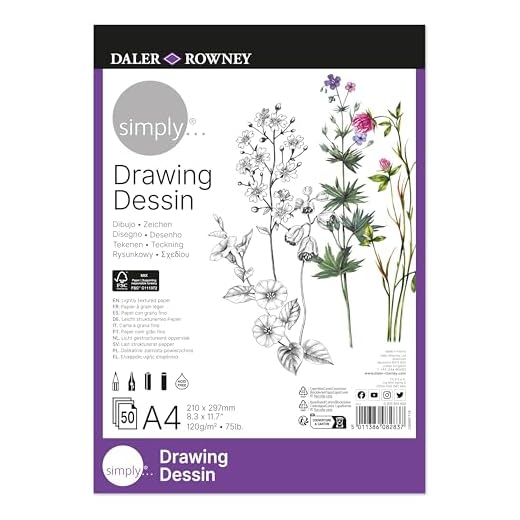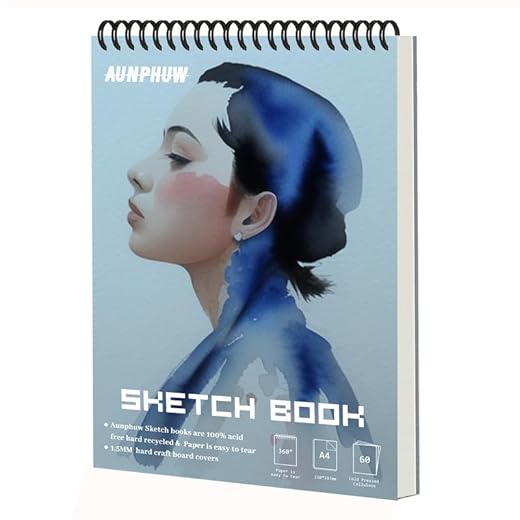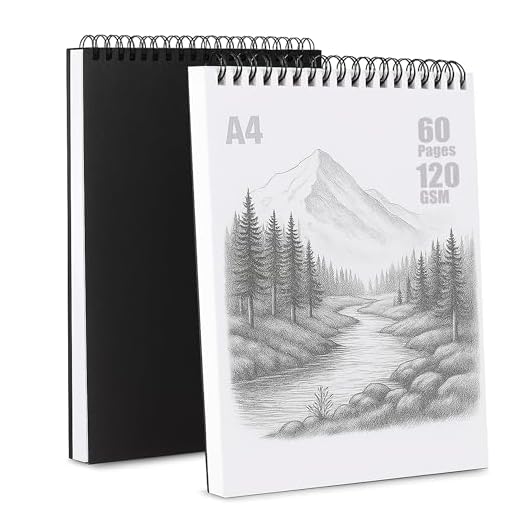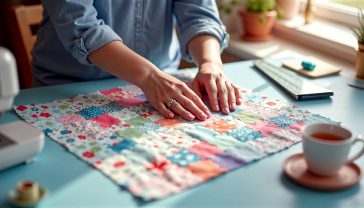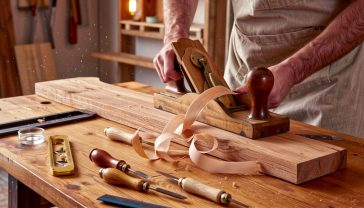Your Foundation for Art: Selecting the Best Drawing Paper in the UK
The ultimate guide to choosing the best drawing paper in the UK. We break down weight, tooth, texture, and the right paper for every medium.
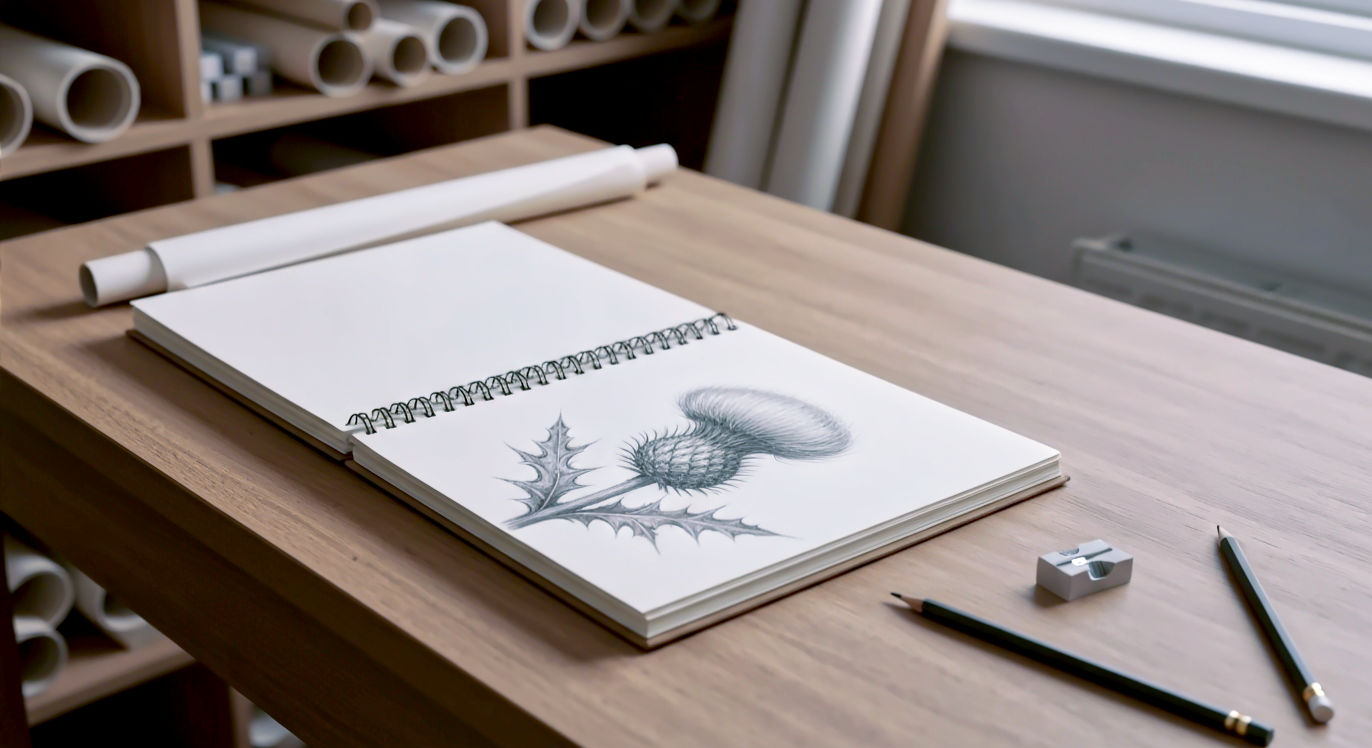
This post may contain affiliate links. If you make a purchase through these links, we may earn a commission at no additional cost to you.
Think about the last time you saw a truly brilliant drawing. Perhaps it was a stunningly realistic portrait in a gallery, a quick, characterful sketch in a London café, or even your own best work. We praise the artist’s skill, the quality of the pencils, the richness of the charcoal. But what about the one thing holding it all together? The paper.
Too often, we treat drawing paper as a mere backdrop. It’s just the ‘thing’ you draw on. But that’s like saying the pitch at Wembley is just ‘grass’. In reality, the paper you choose is the foundation of your artwork. It’s a silent partner in your creative process. The right sheet can make your colours sing and your lines sharp; the wrong one can turn your masterpiece into a buckled, bleeding mess. It’s a bit of a tragedy when a brilliant idea is let down by flimsy paper that just wasn’t up to the job.
Whether you’re sketching in a park in Manchester, inking a comic in Cardiff, or layering coloured pencils in a quiet corner of the Highlands, understanding paper is a game-changer. It’s not about being a paper boffin who can tell you the life story of a sheet of Fabriano Artistico just by sniffing it. It’s about knowing enough to give your art the best possible start.
This guide is your complete map to navigating the world of drawing paper here in the UK. We’ll break down all the confusing jargon, guide you through the aisles of Cass Art or your local independent shop, and help you match the perfect paper to your chosen medium. Let’s get started.
The Nitty-Gritty: Decoding Paper Jargon
Stepping into an art shop can feel a bit overwhelming. You’re faced with a wall of paper pads, all with strange codes and words on them: GSM, tooth, hot-pressed, acid-free. It sounds more like a dental check-up than an art supply run. But don’t worry, it’s much simpler than it looks. Let’s break down the key things you need to know.
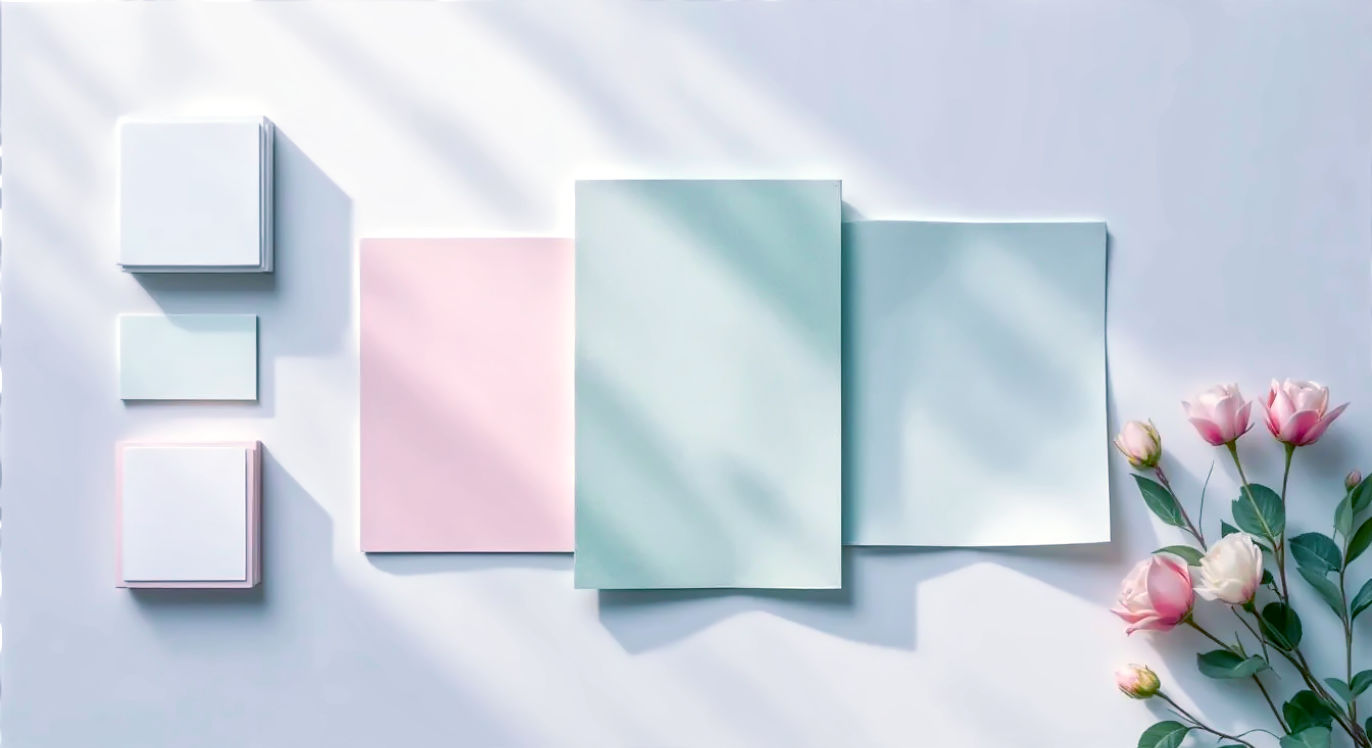
Paper Weight (GSM): More Than Just Thickness
You’ve likely noticed that some paper is flimsy, like the stuff in your printer, while other paper is stiff, like a fancy wedding invitation. This is all about paper weight, and in the UK and Europe, we measure it in GSM (Grams per Square Metre).
- Simplified Explanation: Think of it like this: GSM is a measure of how dense the paper is. A higher GSM number means a heavier, thicker, and generally sturdier sheet of paper.
- Detailed Explanation: The number refers to the weight of a single sheet measuring one metre by one metre. For instance, if you had a giant 1m x 1m sheet of standard British printer paper, it would weigh about 80 grams. This measurement gives us a consistent way to compare different types of paper.
Here’s a rough guide to what the numbers mean for you:
- Up to 120gsm: This is your lightweight division. It includes everyday printer paper (around 80gsm) and basic sketch pads (often 90-110gsm). It’s perfect for quick doodles, brainstorming ideas, and practising your technique with dry media like graphite pencils. It’s cheap and cheerful, but don’t expect it to handle heavy erasing or any wetness without buckling.
- 120gsm to 200gsm: This is the sweet spot for a good all-round drawing paper. Cartridge paper, a staple in British schools and studios, usually sits in this range (around 130-170gsm). It’s ideal for finished drawings in graphite, charcoal, and coloured pencils. It’s sturdy enough to take a bit of work and erasing without falling apart.
- 200gsm to 300gsm: Now we’re getting into heavyweight territory. This paper feels noticeably more substantial. It’s excellent for artists who are a bit more heavy-handed or want to use mixed media. It can handle ink, markers, and even a light wash of watercolour or gouache without complaining too much.
- 300gsm and above: This is the heavyweight champion. This is primarily the territory of watercolour paper, but it’s fantastic for any mixed media work. It’s tough, durable, and can soak up a lot of water before it even thinks about buckling. If you plan on getting wet and wild with your materials, this is your safest bet.
Tooth: The Paper’s Grip
Paper isn’t perfectly smooth on a microscopic level. It has a texture, a ‘grain’ made up of tiny hills and valleys. Artists call this texture the tooth.
- Simplified Explanation: The tooth is the paper’s grip. Imagine trying to draw with chalk on a pane of glass versus a pavement slab. The glass is too smooth; the chalk just slides off. The pavement has loads of texture for the chalk to cling to. That’s tooth in action.
- Detailed Explanation: The amount of tooth determines how the paper grabs particles from your drawing tool. A paper with more tooth will pull off more pigment from a pencil or pastel, resulting in a darker, richer mark. A smoother paper allows for finer detail but holds less material.
Paper texture is generally categorised into three main types:
- Hot-Pressed (HP): This paper is passed through hot rollers during production, which squashes the surface and makes it very smooth. It has minimal tooth.
- Best for: Ink pens, fineliners, markers, and detailed coloured pencil work where you want seamless blending. The pen nib glides effortlessly across the surface without snagging.
- Cold-Pressed (CP or NOT): ‘NOT’ simply means ‘not hot-pressed’. This is the middle-of-the-road option with a noticeable texture or tooth. It’s the most popular surface for many artists.
- Best for: Almost everything! It’s fantastic for graphite, charcoal, and pastels because the tooth gives the medium something to cling to. It’s the versatile workhorse of the paper world.
- Rough: As the name suggests, this paper has a very pronounced, bumpy texture. It’s the most textured paper you can get.
- Best for: Expressive, large-scale drawings with charcoal or pastels where you want the texture of the paper to be part of the artwork. It’s also popular for bold watercolour techniques.
Sizing: The Paper’s Raincoat
If you dropped a blob of ink onto a piece of kitchen roll, it would spread out instantly. To stop this from happening with art paper, manufacturers add a substance called sizing.
- Simplified Explanation: Sizing is like a sealant or a raincoat for the paper fibres. It controls how much liquid the paper absorbs, preventing ink and paint from feathering (spreading out into fuzzy lines) and bleeding through to the other side.
- Detailed Explanation: Sizing can be mixed in with the paper pulp during production (internal sizing) or applied to the surface of the finished sheet (surface sizing). Most good quality papers have both. It ensures that water-based media like ink washes or watercolour sit on the surface for a moment, giving you time to work with them before they soak in. For dry media, it helps create a more robust surface that can stand up to erasing.
Material and Acidity: Will Your Art Survive?
Have you ever found an old newspaper or paperback book that has turned yellow and brittle? That’s the result of acid in the paper slowly breaking it down. You don’t want that happening to your artwork.
- Simplified Explanation: Good quality art paper is ‘acid-free’, which means it won’t yellow and crumble over time. It’s designed to last, so your art won’t self-destruct in a few years.
- Detailed Explanation: The main culprit is a compound called lignin, which is naturally found in wood pulp. When exposed to light and air, lignin breaks down and releases acid, causing the paper to discolour and become fragile. To create archival-quality paper, manufacturers remove the lignin and buffer the paper with an alkaline substance (like calcium carbonate) to give it a neutral pH.
The material the paper is made from also plays a huge role:
- Wood Pulp (Cellulose): This is what most everyday paper is made from. It’s affordable and perfectly fine for sketching and practice, as long as it’s been treated to be acid-free.
- Cotton: Also known as ‘rag paper’, this is the gold standard. Made from cotton fibres, it’s naturally lignin-free, incredibly strong, and has a beautiful surface. Paper made from 100% cotton is considered the best archival quality you can get. It’s more expensive, but for a finished piece you want to last for generations, it’s worth the investment.
The Perfect Match: Pairing Paper with Your Medium
Now for the fun part. Choosing paper isn’t just about technical specs; it’s about what you want to create. Different media have different personalities, and they all need the right dance partner.
For Graphite and Sketching Pencils
This is where most of us start. The humble pencil is versatile, but the right paper can elevate a simple sketch.
What you need: A surface with a bit of tooth to grab the graphite particles. If the paper is too smooth, the pencil will struggle to leave a dark mark. If it’s too rough, you’ll lose all your fine detail.
Paper Recommendations:
Sketch Pads (90-120gsm): Perfect for daily practice and getting ideas down. They are usually thin but have a fine grain that’s pleasant to draw on.
Cartridge Paper (130-170gsm): The classic choice. Its name comes from the fact it was originally used to make paper cartridges for firearms. It’s a brilliant all-rounder with a slight texture that’s perfect for detailed pencil work, shading, and can even withstand a bit of erasing.
Top UK Picks: Daler-Rowney Fine Grain series, Winsor & Newton Sketch Pads, Seawhite of Brighton Cartridge Paper Pads.
For Coloured Pencils
Coloured pencils require a paper that can handle pressure and multiple layers of colour. You need to be able to build up rich, deep tones.
- What you need: A surface that is smooth enough for blending but has just enough tooth to grab the waxy or oil-based pigment. You also need a sturdy paper that won’t buckle under pressure.
- Paper Recommendations:
- Heavyweight Drawing Paper (150-250gsm): A good cold-pressed (NOT) surface works well.
- Bristol Board: This is a super smooth, stiff, multi-ply paper. It’s brilliant for achieving a photorealistic, blended finish with coloured pencils.
- Hot-Pressed (HP) Watercolour Paper (300gsm): Don’t let the name fool you. The smooth, durable surface of hot-pressed paper is a dream for coloured pencil artists who want to layer colours endlessly.
- Top UK Picks: Strathmore 400 Series Drawing, Fabriano Artistico Hot Pressed, Winsor & Newton Bristol Board.
For Charcoal and Pastels
Charcoal and pastels are dusty, powdery media. They need a surface they can really cling to.
- What you need: Tooth, and lots of it! A smooth paper will be useless here; the pigment will just slide off. You need a textured surface with deep valleys for the particles to settle into.
- Paper Recommendations:
- Pastel Paper: Specifically designed for the job. It often has a distinctive texture, like a fine honeycomb or grid pattern, to hold the pastel. It also comes in various colours, which can form a beautiful mid-tone background for your work.
- Ingres Paper: A classic, mould-made paper with a ‘laid’ finish (a fine-lined texture). It’s a favourite for life drawing.
- Rough Watercolour Paper: The heavy texture is perfect for grabbing lots of pigment, allowing for bold, expressive marks.
- Top UK Picks: Canson Mi-Teintes, Daler-Rowney Ingres Paper, Fabriano Tiziano Pastel Paper.
For Ink (Fineliners, Dip Pens, Brush Pens)
When working with wet ink, your main enemies are feathering and bleeding. You need a paper that keeps your lines crisp and clean.
- What you need: An ultra-smooth surface with tight fibres and good sizing. Any significant texture will cause the pen nib to skip or catch, and the ink to spread.
- Paper Recommendations:
- Bristol Board (Smooth): This is the undisputed champion for ink work. Its perfectly smooth, hard surface ensures your lines are razor-sharp. It’s the standard for comic book artists and illustrators for a reason.
- Hot-Pressed (HP) Watercolour Paper: If you plan on adding ink washes, this is a brilliant choice. It’s smooth enough for line work but robust enough (at 300gsm) to handle water without buckling.
- Top UK Picks: Winsor & Newton Bristol Board, Strathmore 300 Series Bristol Smooth, Arches Hot Pressed Watercolour Paper.
For Markers (Alcohol-Based)
Alcohol markers (like Copic or Promarker) are fantastic for vibrant, smooth colour, but they are notorious for bleeding through paper, ruining the sheet underneath and wasting expensive ink.
- What you need: Specialised paper that is bleed-proof.
- Paper Recommendations:
- Marker Paper: This paper is thin but has a special coating on the back that prevents the ink from soaking through. The front is ultra-smooth, which is perfect for blending colours seamlessly.
- Top UK Picks: Winsor & Newton Bleedproof Paper Pad, Canson The Wall Marker Pad.
For Mixed Media
What if you want to throw everything at the page? Pencils, ink, paint, collage…
- What you need: A tough, heavyweight jack-of-all-trades paper that won’t give up under pressure.
- Paper Recommendations:
- Mixed Media Paper (250gsm+): As the name suggests, this paper is designed to handle a bit of everything. It typically has a vellum surface (a medium tooth) and is heavy enough to take light washes.
- Cold-Pressed (NOT) Watercolour Paper (300gsm+): This is often the best choice for heavy mixed media work. It’s built to withstand water, so it can handle ink, acrylics, and gouache, while its texture is still great for pencils and charcoal.
- Top UK Picks: Canson XL Mixed Media Pad, Strathmore 400 Series Mixed Media, Daler-Rowney Optima Mixed Media Paper.
Navigating the Art Shop: A UK Buyer’s Guide
Armed with this new knowledge, you’re ready to hit the shops. Whether you’re browsing online from your sofa or visiting your local high street art store, here’s how to make sense of the options.
Formats: Pads, Blocks, Sheets, and Rolls
You’ll find paper sold in several different formats:
- Pads: The most common format. Sheets are bound together on one edge.
- Spiral-bound: Great for flipping pages back fully. The pages can also be easily and cleanly removed thanks to micro-perforations.
- Glue-bound: Easy to tear a single sheet out, but the pad can fall apart over time.
- Sketchbooks: Similar to pads but usually with a hard cover, designed to be portable and protect your work. A must-have for every artist.
- Loose Sheets: Buying large, single sheets is often more economical for professional artists. It allows you to work at any size you like and choose from a wider range of high-end papers.
- Rolls: For those who like to work really big! Buying a whole roll is the most cost-effective way to get a lot of paper.
Paper Sizes: A-Series vs. Imperial
In the UK, you’ll mostly encounter the ‘A’ series of paper sizes, which is the international standard. You’ll know these well:
- A4: Standard letter size (210 x 297 mm)
- A3: Twice the size of A4 (297 x 420 mm)
- A2: Twice the size of A3 (420 x 594 mm)
- And so on.
However, in the world of fine art paper, you’ll also see traditional Imperial sizes for single sheets, like ‘Imperial’ (22 x 30 inches) and ‘Half Imperial’ (15 x 22 inches). Don’t worry about memorising them; just be aware they exist so you’re not confused when you see them.
Where to Buy Paper in the UK
- Big Chains: Shops like Cass Art, Hobbycraft, and The Range have a good selection of the most popular brands and are great for beginners and hobbyists.
- Online Specialists: Websites like Jackson’s Art Supplies, Ken Bromley Art Supplies, and GreatArt offer a massive range, including more niche and professional papers. Their prices are often very competitive.
- Your Local Independent Art Shop: Don’t forget these gems. The staff are often artists themselves and can offer brilliant, personalised advice. Supporting them helps keep our high streets creative.
Key Brands to Look For
You’ll see a lot of the same names popping up. Here are a few of the most trusted brands you’ll find in the UK:
- Winsor & Newton (British): A heritage brand with a Royal Warrant. Reliable, high-quality materials across the board.
- Daler-Rowney (British): Another UK institution, founded in 1783. Their cartridge paper is a national treasure for artists.
- Seawhite of Brighton (British): Famous for their excellent value sketchbooks and papers, very popular with students.
- Fabriano (Italian): One of the oldest paper mills in the world, dating back to 1264. They make exquisite paper, especially their Artistico range.
- Canson (French): A huge company with a vast range of papers for every possible need, from student sketch pads to professional pastel papers.
- Strathmore (American): While not British, their papers are extremely popular here, especially their Bristol Board and Toned papers.
- Arches (French): Often called the “Rolls-Royce” of paper. Their 100% cotton watercolour paper is legendary, and it’s a superb (if pricey) surface for drawing too.
Common Pitfalls and Pro Tips
It’s easy to make a few mistakes when you’re starting out. Here are some common slip-ups and how to avoid them.
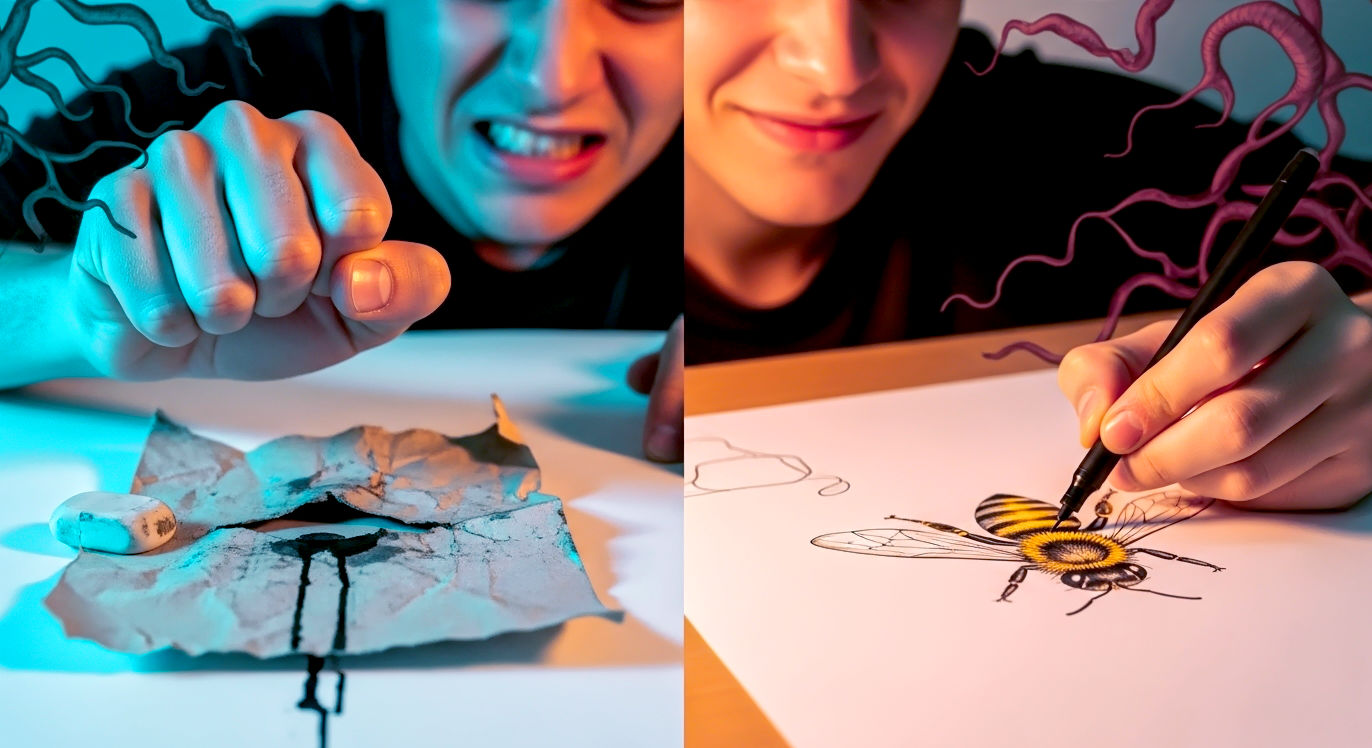
- Mistake #1: The Cheap Printer Paper Trap. We’ve all done it. You have a great idea, but the only paper to hand is the flimsy 80gsm stuff from the printer. You start drawing, try to do some shading, and it just looks… flat. Then you try to erase a line and the paper tears. Solution: Even a basic cartridge paper sketchbook will make a world of difference. Treat yourself!
- Mistake #2: Fighting the Texture. Trying to draw a super-smooth, detailed portrait with a fineliner on rough, toothy paper is a recipe for frustration. The pen will snag and your lines will look shaky. Solution: Think about your final piece before you start. If you want fine detail, reach for a smooth paper. If you want bold texture, grab something with tooth.
- Mistake #3: Forgetting the Future. You spend 20 hours on a beautiful coloured pencil drawing on cheap, acidic paper. You frame it, hang it on the wall, and a few years later, it’s yellowed and faded. Heartbreaking. Solution: For any piece you’re serious about, use acid-free, archival paper. It might cost a little more, but it will protect your hard work.
A Few Pro Tips
- Try Before You Buy: Many good art shops sell single sheets of their professional papers. Buy a few different types and experiment. See how they feel. It’s the best way to find what you love without committing to a whole pad.
- Know That “Rules” Are Guidelines: While this guide gives you the best practices, art is all about experimentation. Some artists create amazing things by breaking the rules. Don’t be afraid to try ink on pastel paper or charcoal on Bristol board. You never know what you might discover.
- Store It Right: Paper doesn’t like moisture or direct sunlight. Store your pads, sketchbooks, and sheets flat in a dry, dark place (like a drawer or a portfolio case) to keep them in perfect condition.
The Future is on Paper
In our increasingly digital world, you might think paper is on its way out. But for artists, the opposite seems to be true. The feeling of a pencil gliding across a real sheet of paper, the smell of the wood and cotton fibres, the satisfaction of holding a finished physical object – these are things a screen can’t replicate.
The industry is also evolving. There’s a growing demand for sustainable and eco-friendly papers made from bamboo, hemp, or recycled materials. These offer exciting new textures and properties while being kinder to our planet.
Ultimately, the connection between an artist and their paper is timeless. It’s a physical craft, a direct link between your imagination and the real world.
Your Creative Foundation
Choosing the right drawing paper isn’t a test you can fail. It’s an exploration. It’s about understanding your tools and materials so they can help you, not hinder you. Paper is far more than just a surface; it’s the stage on which your ideas come to life. It holds the first faint lines of a new idea and the final, bold strokes of a finished work.
So next time you’re in an art shop, don’t just grab the first pad you see. Take a moment. Feel the surfaces. Check the GSM. Think about what you want to create. By giving your paper the consideration it deserves, you’re not just buying a product; you’re investing in the foundation of your future art. Now go and make something brilliant.
Further Reading
For those eager to dive even deeper, here are some excellent UK-based resources:
- Jackson’s Art Blog: An incredible resource with detailed guides on every art material imaginable.
- Cass Art Blog: A great source of inspiration, artist interviews, and practical tips.
- Ken Bromley Art Supplies: Their website and catalogue are full of useful information about the products they sell.

